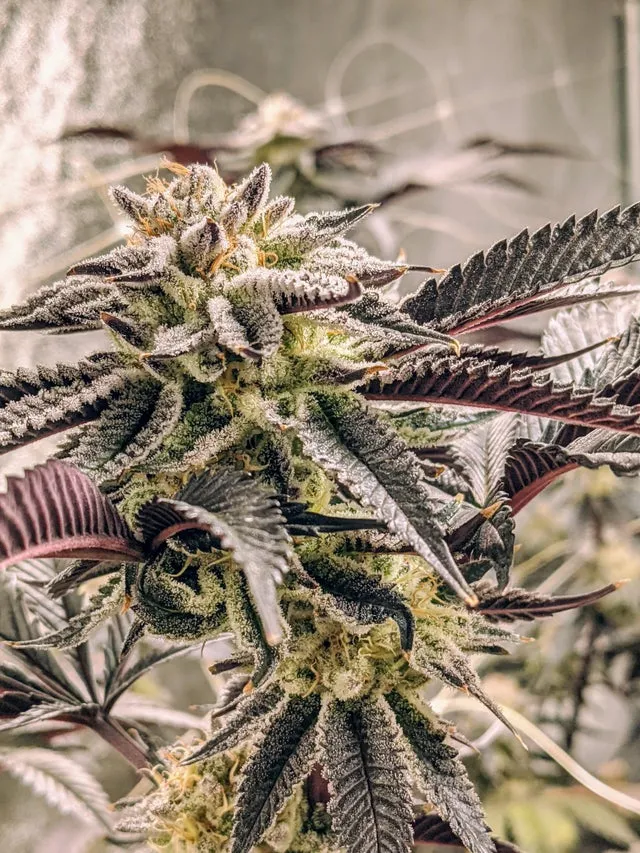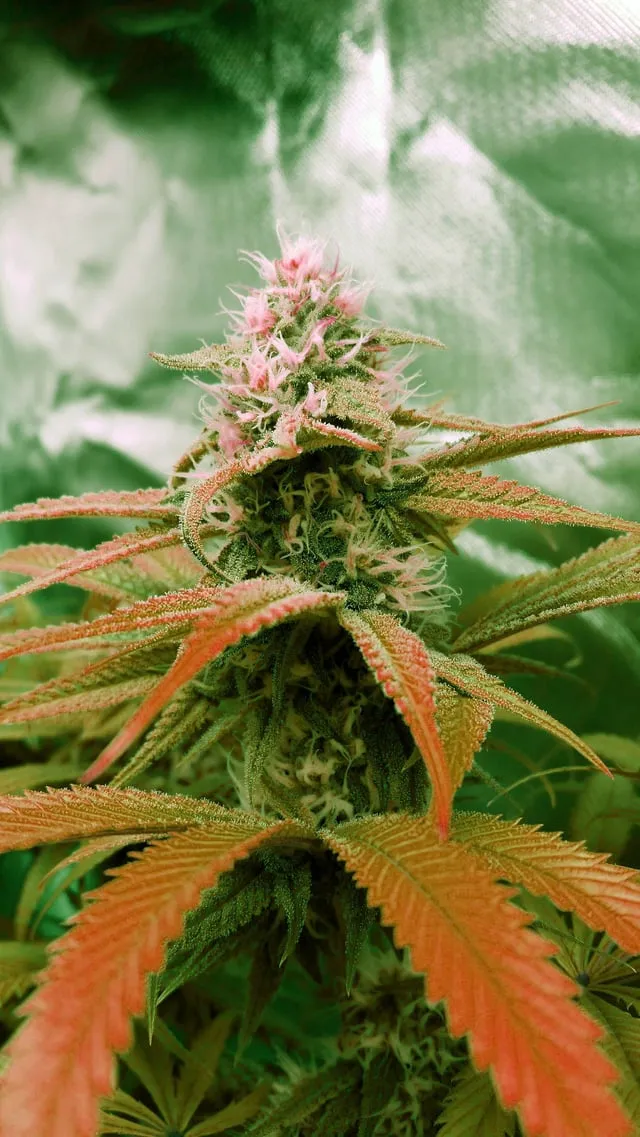Growing Organic Cannabis: Part 4

( Photo Credit: u/iwantavote, Wedding Crasher day 63 of flower )
Macro Nutrients
(Quick recap of macro nutrients, before we get into Phosphorus)
Macro nutrients are going to make up the bulk of what your plants will consume, and this is going to be the main focus of your efforts to keep your Cannabis well fed as a grower.
A common misconception about the Macro Nutrients is they are N-P-K. They are not.
The macro nutrients are actually N-P-K-Ca-S-Mg:
- Nitrogen (N)
- Phosphorus (P)
- Potassium (K)
- Calcium (Ca)
- Sulfur (S)
- Magnesium (Mg)
In his excellent book "Teaming with Nutrients" Jeff Lowenfels wheels out an important artifact from agricultural history:
Justus Von Liebig, considered by most as the father of modern agricultural science, again contributed to the field in 1863 when he proposed the Law of the Minimum.
It states, “A manure containing several ingredients acts in this wise: The effect of all of them in the soil accommodates itself to that one among them which, in comparison to the wants of the plant, is present in the smallest quantity.”
In other words, plant growth is limited by the least abundant mineral, no matter how abundant the other minerals happen to be.

( Photo Credit: u/fataqui, Wicked Pink Lemonade, day 28 of flower )
Phosphorus (P)
All plant cells make use of Phosphorus to power literally every function that a cell can do. Plants use photosynthesis to take ADP (Adenosine DiPhosphate) and add one Phosphorus atom to it to make it ATP (Adenosine TriPhosphate). ATP is what powers all cellular functions besides photosynthesis. Additionally plants need Phosphorus to run their nutrient uptake systems, so without it, growth will grind to a halt.
Phosphorus, like Nitrogen, is a mobile element, meaning the plant can draw it out of older growth and direct it towards newer growth.
Graham Abbott did an excellent write up on the importance of Phosphorus, he points out several critical functions of Phosphorus:
Phosphorus is especially important for early stage root development, stem strength, resistance to disease, nutrient uptake, flower formation and yield. All aspects of cannabis growth and development are explicitly dependent on P availability.
Phosphorus is vital in order to maintain the cannabis plant’s genetic integrity from one generation to the next. For example, P is a primary component of deoxyribonucleic acid (DNA), which is a molecule that stores the genetic instructions used for cannabis development and reproduction. Phosphorus is also a component of ribonucleic acid (RNA), the compound that reads DNA (i.e. the genetic code) to build structural, functional and reproductive compounds used across the cannabis plant life cycle – from early stage cellular development to later stage bloom production. Both DNA and RNA are linked together by phosphorus bonds. Healthy cannabis development is explicitly linked to its genetic make-up – which is unconditionally dependent on P availability.
Although P is widely distributed in natural systems, it mostly exists in mineral forms or as organic matter that cannot be directly taken up by plants. Rock phosphate is used as the primary source of inorganic P fertilizer for traditional commercial agriculture; and manure is the primary source of P used in organic agriculture management practices. However, these forms of P need to be broken down into dissolved orthophosphate (P043-) to be utilized by the plant.
A challenge that limits cannabis P uptake is the inherent chemical binding characteristics of most growth media such as soil, peat, and coco. For example, up to 70% of P applied to these types of growth media can become almost immediately unavailable for plant uptake due to natural chemical binding and chemical transformations.
Many studies have cited that harnessing the natural power of soil microbes can help maximize nutrient use efficiency and plant P uptake. Soil microbes can be utilized to naturally unlock bound nutrients, transforming nutrients back into plant available forms, maximizing P availability to significantly increase plant P uptake and in turn maximize the phenotypic potential of the cannabis plant for optimal growth, quality and yield.
Phosphorus sources from slow to fast release:
- Rock Phosphate (very slow release, it only makes sense to use this nutrient in soil recycling programs)
- Fish bone meal (I believe this is unsteamed bone meal that has been prilled, meaning pelletized, this is moderate-speed release phosphorus)
- Soft Rock Phosphate (prilled, also moderate release)
- Bone Meal (this is usually steamed bone meal and comes in a fine powder, this is VERY fast release phosphorus, use with caution, small doses)
- Fish oil (fast acting)
Just a word of caution, if you are growing indoors, fish bone meal, bone meal, and fish oil are stinky. Bone meal smells like DEATH, and fish bone meal / fish oil... well they smell like FISH. You can mitigate the smell by mixing them into the soil and composting them, but they still might give off a small scent. If you don't like unpleasant odors that may permeate your grow room for several days, I recommend going with the rock phosphates.
Again, you have a small array of nutrients that you can harness to keep your plants well fed with Phosphorus.
Keep in mind that most Phosphorus is bound to other minerals, or will soon be bound to other minerals, so remember: microorganisms are your friends! They have developed specialized abilities to free that environmentally bound phosphorus and deliver it to your plant in the plant-friendly "orthophosphate (P043-)" form. Thankfully, organic growing is very friendly towards microorganisms!
In part 5 we will discuss the macro nutrient Potassium!
If you liked this article, hit that upvote button, subscribe if you want to see more of my articles, and if you feel like it, drop me a comment down below!
Till next time, happy toking you buncha stoners!
